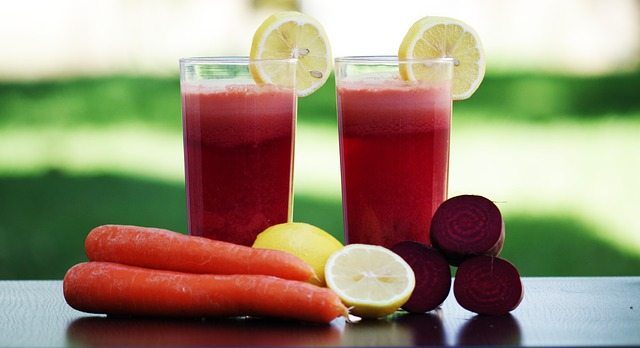 These days, we’re all increasingly busy and looking for the quickest fix. This is particularly true when it comes to food; fast food has been popular for decades, but people who are pressed for time don’t necessarily want the unhealthy side effects associated with most quick meals.
These days, we’re all increasingly busy and looking for the quickest fix. This is particularly true when it comes to food; fast food has been popular for decades, but people who are pressed for time don’t necessarily want the unhealthy side effects associated with most quick meals.
One way to solve the dilemma is with the ultimate power food in the form of a meal in a glass: smoothies. One of the beauties of the creamy drink is it that you can get creative and make up your own concoctions, using whatever you may have on hand in the freezer, refrigerator and even the cupboard. Smoothies are versatile, simple and quick: all you need is a blender and the right combination of ingredients to suit your taste, and breakfast can be made in a matter of minutes. The drinks are also readily available at juice bars, cafés and delis and can be an excellent way to help meet your daily quota of fruits and vegetables.
Of course, loading up the blender with heaps of protein powder, fruit and juice does not necessarily make for a healthful meal. According to Kendall Berman, certified juicing coach and co-owner of the juice bar Nooks & Kindles, which has locations in Roslyn, Greenvale and Glen Cove, it’s easy for people to go overboard—or overindulge on what might seem like a healthy choice at a juice bar—and that can lead to negative consequences.
“You definitely have to watch out for sugars,” said Berman. “Sugary syrups, yogurts and sweetened fruit or juices are often added to smoothies—and sugar is linked to obesity, inflammation, high blood pressure and heart disease.”
 She said another habit people tend to have is making a smoothie too dense, which increases the fat content as well as the calorie count.
She said another habit people tend to have is making a smoothie too dense, which increases the fat content as well as the calorie count.
Ideally, she said a smoothie as a meal replacement should be a 20-ounce drink that is between 400 to 500 calories and consist of a healthy fat, such as chia seeds or a nut butter, a protein source like nonfat Greek yogurt or protein powder and a carbohydrate, such as a banana.
“And then I suggest adding something green, like spinach, for an extra benefit,” she said.
Her go-to smoothie consists of spinach, vanilla whey protein, pineapple, mango, banana and either avocado or chia seeds. Because fruits are high in carbohydrates, she said it’s good to have a variety and use smaller amounts. She said berries are also good to use as low-carb additions.
For those who want their fruits and veggies in a liquid form, smoothies can be consumed as a snack, accompanying a low-carb meal. In this case, just a variety of fruit and a liquid base are needed. Berman suggests coconut water, as it is hydrating and refreshing, or for a creamier smoothie, use skim milk or unsweetened almond milk.
A smoothie can be sweet and satisfying and in the end, how it’s made is a matter of personal preference.
“It all depends on your goal,” said Berman.


















